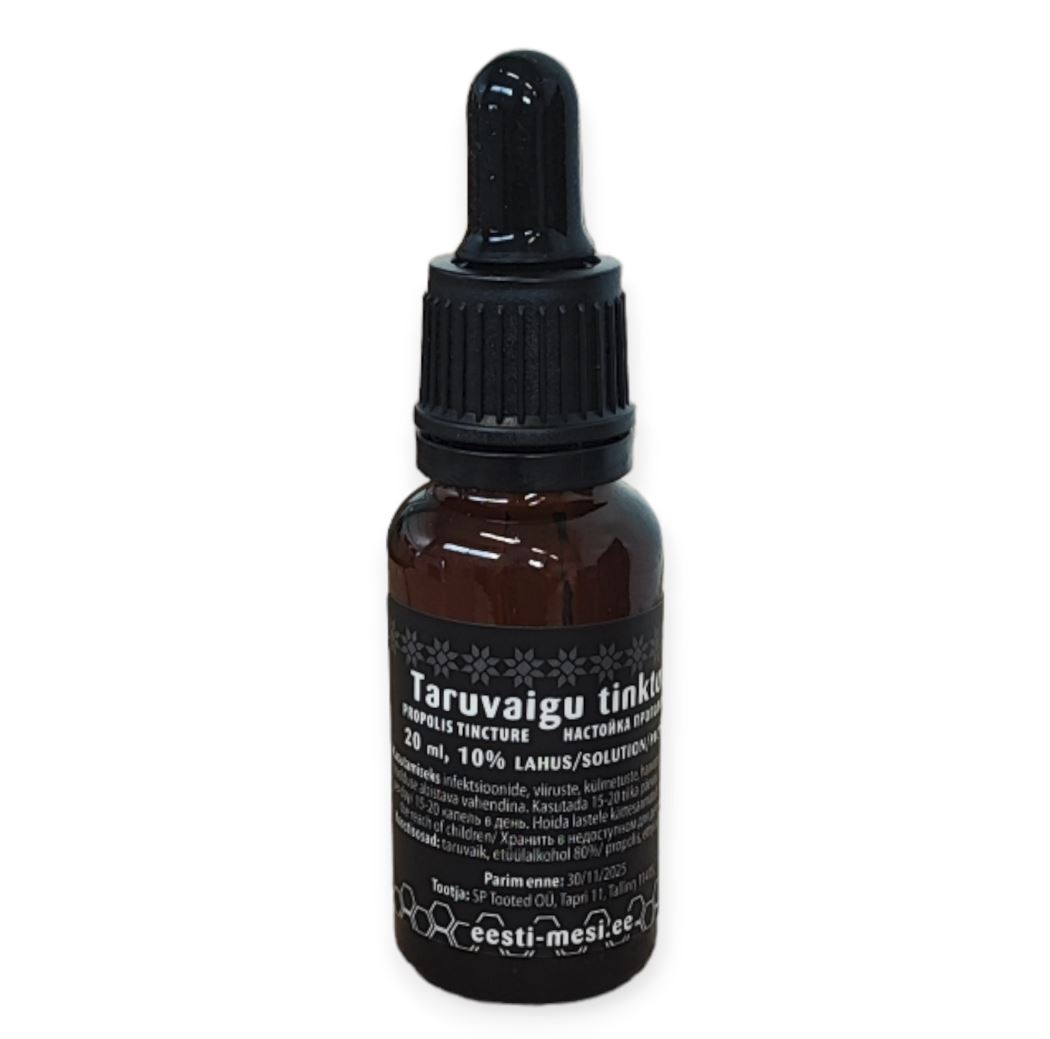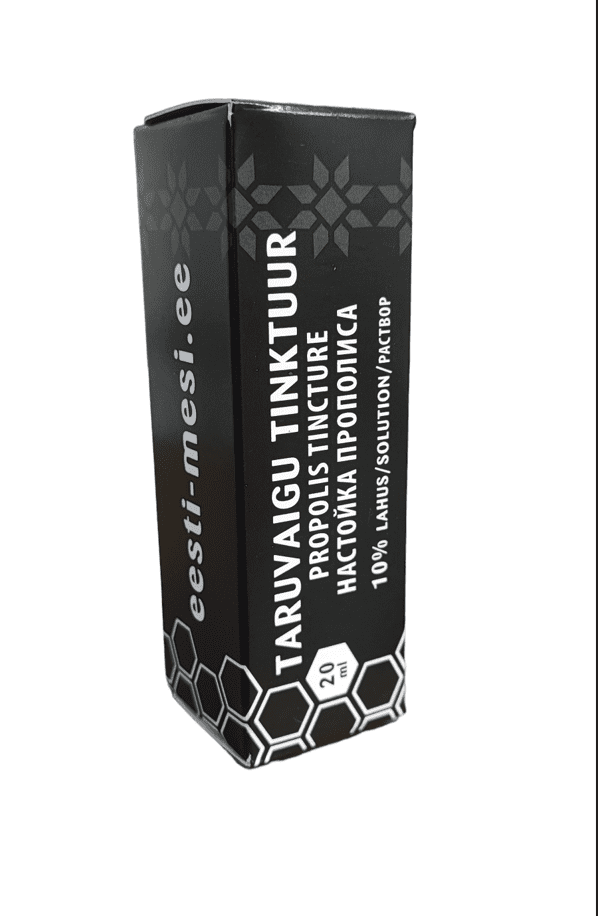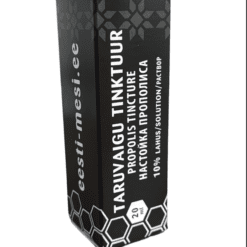Dilute 10-20 drops mixed in 150 ml of water , take in or gargle. Or used externally for lubrication
Propolis, or propolis, heals wounds, prevents the development of germs of several pathogens, relieves pain, is hypoallergenic, and has an antitoxic and tissue-restoring effect.
In folk medicine, propolis is used primarily for its antibacterial properties to relieve ailments of the nose, throat, ears, respiratory tract, prostate gland and others, as well as for anesthesia and disinfection.
Propolis prevents the development of pathogens, heals wounds and relieves pain.
Propolis also enhances hematopoiesis, especially if taken with honey.
Propolis consists of vegetable proteins and balms (50–55%), waxt (30–40%), essential oils (8–10%) and pollen (5–10%)
Propolis contains plant resins, tannins, essential oils, wax, etc. Its biological activity is mainly due to phenolic compounds. Propolis anesthetizes the mucous membranes and abrasion areas of the skin, reduces itching, slows down the formation of edema, reduces inflammation, destroys bacteria and viruses, prevents the growth of disease fungi, accelerates the healing of tissues and the regeneration of epithelial tissue of the skin , reduces high cholesterol in the blood, enhances hematopoiesis. Propolis has a stronger effect than synthetic antibiotics in many cases and has a deadly effect on more than 100 species of bacteria, viruses and fungi. Propolis prevents the development of pathogens, heals wounds and relieves pain. From the inside, propolis helps with gum problems, esophagus, stomach, duodenum and other irritations.
Source: Maaleht
Read more













